3 be EGO-FREE
WHERE WE PLAY > Leadership
be EGO-FREE
"I was a Swordsman in Medieval Japan", is the answer I give with a wink to the question where my passion for Japan comes from. I can not really answer that question, but I feel very attracted to the culture, especially the ZEN culture.
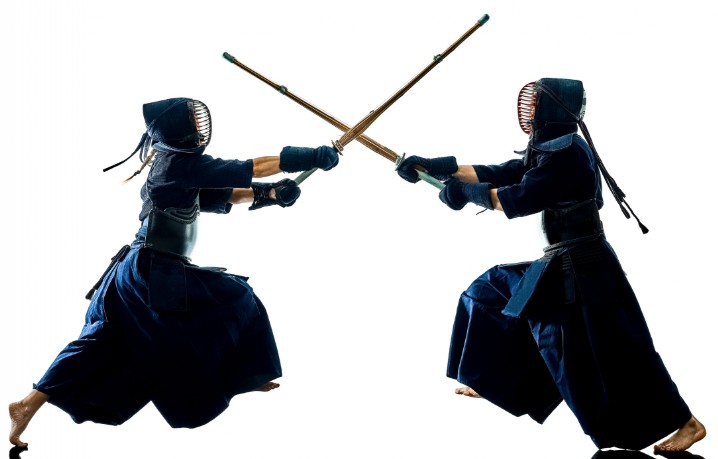
My personal way to ZEN Meditation
I grew up in the Christian tradition and have never turned my back on this rooting, although I am open to other views and explanations. With my technical background, I like to get to the bottom of things and see myself as a person of knowledge. That is, I only believe in what I can see or explain with the physical laws. So much for my past. However, my perception has been greatly expanded in recent years and I am now ready to accept that there is a world where my scientific perception is limited. Here is a simple example: We perceive the world in its colorful diversity, the red roses, the green grass or the blue sky. A rabbit, on the other hand, would deny that colors exist at all because they are beyond his perception. This simple example in English light, how easy to deceive, can be much more than our own perceptions can be. It's always the statement "I don't know what I don't know". Despite all scientific knowledge, the space of the unknown remains unimaginably large. In the end, we only scratched the surface of the knowledge with our knowledge. There are so many discoveries to be made. A combination of modern scientific knowledge and the millennia-old mystical knowledge could mean a big leap in knowledge. Ultimately, modern science is always an observation of nature, without and with technical help. The correlations identified in this way are then mapped into mathematical systems and form the basis of our modern science. However, it should never be forgotten that all physical laws only apply to certain areas or environments.
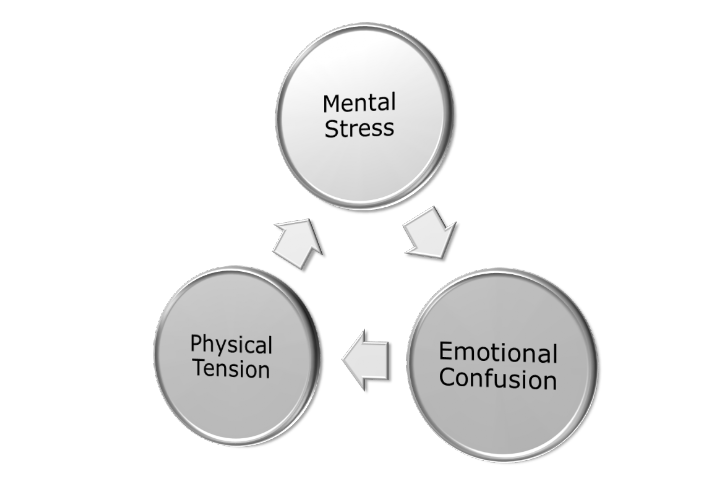
It was immediately clear to me that the ZEN meditation path would be my meditation path. My affinity for Japan and my love of clear ZEN lines made the decision relatively easy. The ZEN Leadership School was also recommended to me two years earlier. During these years I have been very busy introducing KAIZEN, the way of continuous Japanese improvement, into production facilities. One of the consultants, who supported me with the introduction of KAIZEN was also trainer at the ZEN Leadership School. And so I took part in my first ZEN Leadership Seminar in May 2012 as a weekend seminar. It was a very interesting and painful experience. After a few hours of sitting, my knees ached like hell and it was difficult for me to concentrate on my exercises. In addition, the goal was not really clear to me at the time and this is difficult for an engineer to bear. Nevertheless, I started sitting regularly in the morning after the seminar. I quickly realized that I was fine and that I was feeling much better. I was also able to inspire my wife for this path and so she took part in a one-week meditation seminar in the specialist jargon Sesshin in summer 2012. I myself attended my second weekend seminar in autumn 2012 and decided in October 2012 to take part in a one-week sesshin. This was also the breakthrough for me. Since then I've known why I'm sitting. Before that moment, I had just sitting and waiting for the end. I did my breathing exercise and waited for the ping (signal from the teacher at the beginning and at the end of the silent meditation phase). Until then, sitting was mostly pain and not fulfillment. However, this changed during this sesshin, when I achieved this very beautiful condition for the first time. I can't say if it was positive or absolute samadhi (total relaxation) but it was just beautiful. A warm, safe state in which the being is simply pleasant and the mind can move freely. At that moment I also realized, why form and posture are so important and how important immobility and silence are.
My approach to Zen meditation was purely functional. After I turned 40, I found that I was out of balance. There were more and more situations in which I woke up at night and could no longer sleep. Then the carousel of thoughts turned in a vicious circle. The result was concerns about health and emotional stress. The lack of sleep and insufficient sleep in turn led to less energy in everyday life. Figure 1 describes this vicious circle of mind, feeling and physical strain. After I was able to rule out organic damage at various doctors, I started again intensively with sport as the first step to regularly open an outlet for the accumulated adrenaline. This also improved my sleep and led to more relaxation, but I still couldn't stop the root cause.
At the same time, I had been thinking about meditation for a long time and started to practice self-guided meditations in addition to some yoga sessions. Each element brought a slight improvement, but no breakthrough and no real insights. As an engineer, I want to understand things and am mainly interested in the causal relationships, but here I was initially at a dead end.
My path became clearer after reading The Illuminated Brain. I got it from a friend and I was so fascinated that I devoured it in one weekend. In this book, the author Alberto Villoldo describes the effects of meditation on the health of the body and brain. According to Villoldo, meditation produces various messenger substances that are very important for the plasticity and functionality of the brain. In his book, he combines the knowledge of indigenous peoples and shamans with the latest medical technology. His theses on the effects of meditation are also verified by magnetic resonance imaging and studies. This was reason enough for me to make the decision to include the path of meditation in my life.
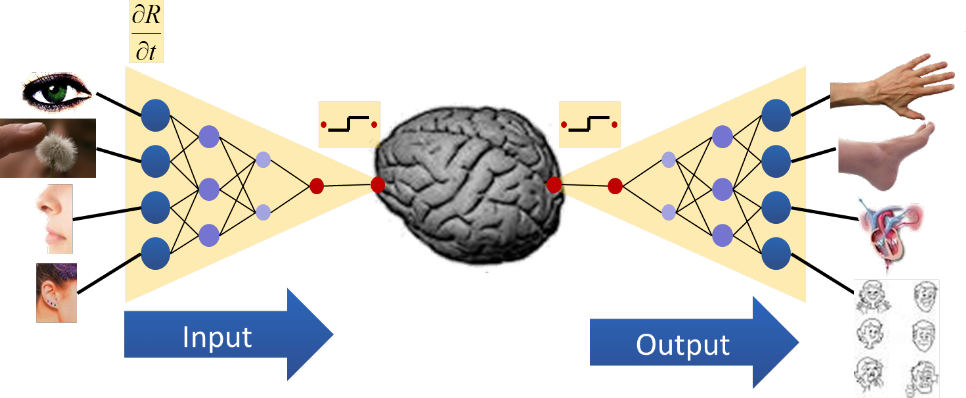
Our ego, the left brain
"Don't be a selfish!" You can often say to yourself or others. But what exactly is this ego, where does the "I" sit in the body? Why is it always so present and cannot be rationally explained and controlled? Jill Bolte Taylor is a brain researcher who describes her own brain stroke in an engaging talk. She made her findings available to the world in this TED talk at the following address: http://www.ted.com/talks/jill_bolte_taylor_s_powerful_stroke_of_insight.html.
These fascinating insights enable a more thorough interpretation of our brain function and give a foretaste of the goal of meditation and the dissolution of the ego. Jill had a left brain infarction and lost her self-related knowledge and functions. In this way she could perceive the world and the moment as it really is without interpreting and processing the information. Here is some background information. Our brain consists of two halves of the brain that are connected only by the "Corpus Callosum", which consists of about 300 million neurons. The human right brain works like a parallel computer, while the left brain is comparable to a classic serial computer. Our activities, our will and our ego are in the left brain and are controlled by it. The stimuli and sensations of the right hemisphere are then used here to provide information. This information is processed, stored, interpreted with past and future and leads to thoughts, emotions and actions. For this reason, we humans are unable to multitask, and classic computers are unable to multitask. What happens to us like multitasking is just a very quick change between the individual tasks. Step 1 of task A is complete, then go to task B and here step 1 is performed, then go back to task A and do step 2 and so on.
In the left brain is also the commentator of our life. This little man or woman who speaks to us all day long and doesn't get a quiet minute. However, when you turn off the left brain, it is suddenly completely quiet, the voice disappears, the ego disappears and all channels are suddenly unfiltered to receive from the right brain. Then you will see the world brand new and unadorned. It is suddenly wonderful and time no longer exists. In this state we refer to the whole world and the atoms of our body merge with the atoms of the environment.
Nevertheless, our left brain is very important. For example, without my left brain I would never write this text and die or starve to death in a short time of thirst. The achievements of science and culture are strongly influenced by the processes of the left brain. However, it should be noted that by deliberately influencing the right and left brain channels, we can work out another dimension. Mindfulness is now possible. If you lower the ego level, you get a whole new chance to experience and use the moment.
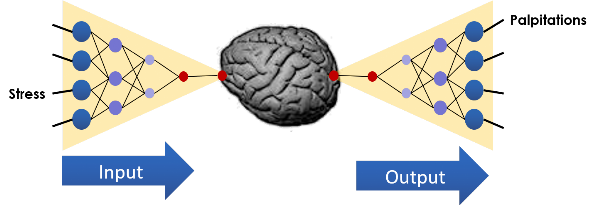
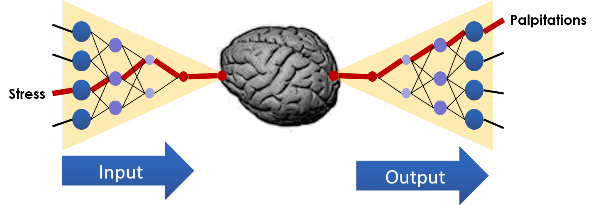
The highway to burnout
Today we humans are exposed to an increasing sensory overload. An average person in the first 10 years of his life is already exposed to more stimuli than a person in the Middle Ages has experienced in his entire life. This overloads our brain and the number of burnout cases increases exponentially. In order to understand the connections, it is useful to familiarize yourself with some functions of the brain. In this section I want to focus on the learning behavior of the brain. For this I use the systems of neural networks for comparison.
As an engineer, I have been dealing with neural networks for many years. In technical applications, so-called artificial neural networks (ANN) are used to carry out complex analysis or control tasks. The structure of such virtual circuits is based on the function of the brain. In such a circuit, different layers of neurons are connected to one another. The weighting of the connections and the threshold values of the neurons are changed by "learning". Test signals are assigned to the input neurons and compared with the results at the output neurons. A deviation leads to a new learning of the connection and threshold values. In this way, burning neuron connections are often strengthened and others weakened.
The situation is similar with the learning process of our brain. Frequent repetitions increase the strength of the neural connections. Data highways are created, so to speak, so that the stimulus transmission takes place faster and preferably.
Chronic pain can also be partially explained by this mechanism. If there is a pain signal over a longer period of time, the data highway for this pain transmission is formed. In the end, the pain continues even if the pain signal is removed. The situation is similar with chronic stress.
This property is shown in Figure 3. Frequent stress leads to the learning of the stress reaction and thus to an intensification of the neuronal connections for the transmission of the stress reactions. This also explains why it is not so easy to get out of this dilemma. The mere elimination of the stress level is not enough, as the stress highways remain and even with a slight emotional reaction lead to the triggering of the stress symptoms. Once a state has been learned, it must be learned or learned again, so to speak.
Dr. med. Othmar Maeser explains this phenomenon on his website http://www.psychiater-psychotherapie.com/?p=741&lang=de with the neuroplasticity of the brain. Clinical studies have shown that the administration of antidepressants leads to a short-term improvement, but is not a cure. He sees healing as a right way by learning the brain.
Regular meditation is exactly the opposite pole. It is a continuous positive learning process. Meditation is therefore a brain training that is supposed to strengthen the positive neuronal data paths. This learning process reinforces the neural connections that lead us to emptiness and switch off the internal commentator. The meditator also notes that as meditation progresses, it becomes increasingly easier to achieve this state as the data highways become more pronounced, resulting in faster and better Samadhi.
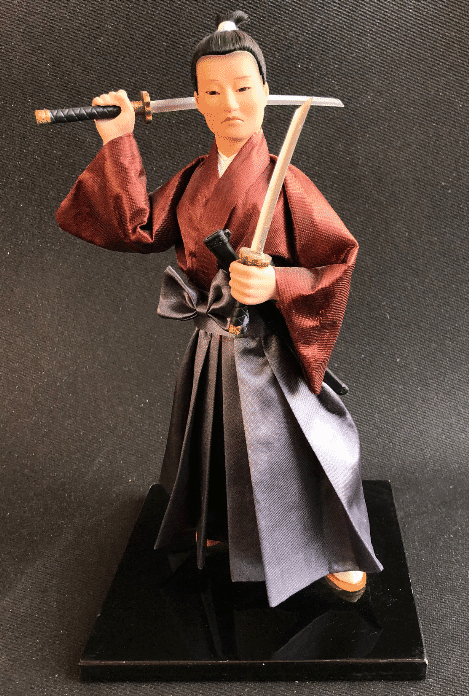
Zen, Samurai and Leadership
Lehman brothers, Libor or Diesel Gate are excesses of our time with weak and sometimes criminal managers. Frequently, however, the reactions are characterized by deepest fear and despair. It is looking for a way out of a supposed crisis.
A samurai whose destiny is to die for his Shogun and face death daily saw this conflict in its most extreme form. The greatest art of successful samurai was this ability to deal with the element of death. To regard death not as the worst fate, but as a destiny.
The combination of leadership and ZEN meditation is a fascinating basic idea. It is necessary to provide the right methods to keep control of our fast moving and complex world. Leaders are particularly challenged because they not only live for themselves, but are also role models and leaders for many others. Here it is important to be able to remain calm in crucial situations and not to be a victim of your own feelings and fears. Who wouldn't trust "Sully" Sullenberger, the captain who landed a plane on the Hudson River, rather than the captain of the Costa Concordia, who sank a ship and flew overboard? Keeping calm in extreme situations is critical for leaders. This is particularly evident in the comparison of samurai virtues and those of good leaders. Both are very intensive paths that require the same amount from the whole person. For the samurai, the daily challenge of overcoming life and death is the leader's challenge of overcoming the economic fears of the future. In both cases it is about letting go, the dissolution of the ego and the willingness to go a path with devotion.
A few Links to some mind-blowing TED talks
be EGO-FREE
- TRAIN your BRAIN --> do daily Meditation or Yoga
- Reflect Yourself in after action reviews to tough discussions, projects or crisis situations --> What drives you? Are you calm? Is your Ego taking over?
- What is your motivation? Intrinsic or external Factors?
- AWAKE the SAMURAI inside Yourself.
- If you take your EGO out of your decision making process, you will make GOOD DECISIONS

ROLE MODEL: Matthieu Ricard (a Buddhist Monk)
Matthieu Ricard is a Buddhist Monk, serving the Dalai Lama. He is French and used to be a successful scientist at the Pasteur institute in Paris.
He decided to leave this behind and serve as a Monk.
His speeches about Meditation and Happiness are very inspiring